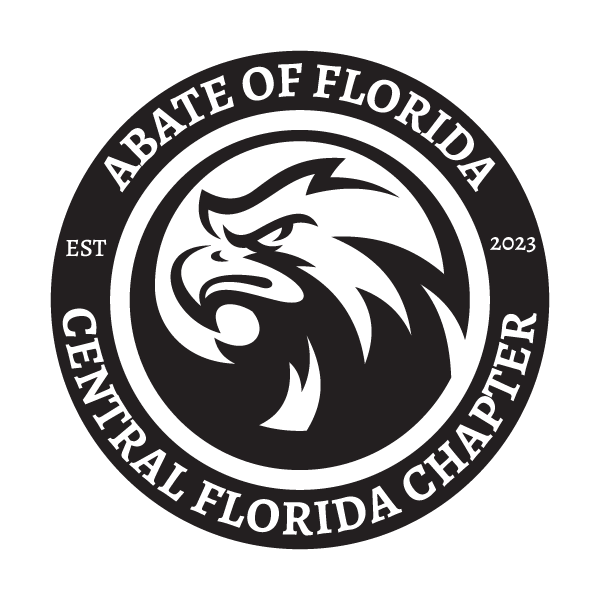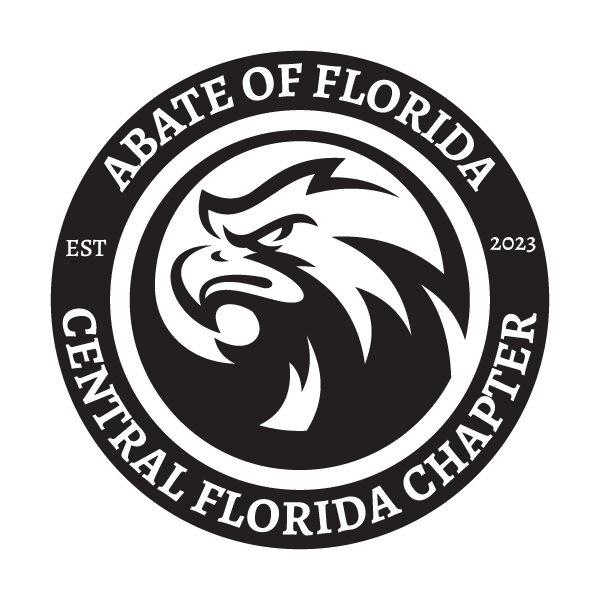It’s important for drivers to know how to safely share the road with motorcyclists. The Motorcycle Safety and Awareness Program, or MSAP, was created by ABATE of Florida, Inc. to provide information to the public in order to reduce motorcycle accidents and help save lives.
There are over 900,000 motorcycle riders in Florida now, so the need to educate drivers is more important than ever. With this in mind, ABATE of Florida has created MSAP, and the program is now taught in Drivers Education Programs at local schools and other civic organizations for free. The goal of MSAP is to reduce the number of motorcycle accidents through education instead of legislation.
Members of the local chapters of ABATE, from Pensacola down to Key West, are available to teach the program. They not only share their experiences, but also provide essential information to help improve safety for all drivers. As ABATE of Florida continues to expand, we are focusing our efforts on making sure people know how to drive safely around motorcycles.
MSAP is available to any school or organization for free, contact your local ABATE of Florida chapter for more details.
Motorcycle Safety Tips for Drivers
Motorcycles are smaller and harder to see than other vehicles. They also don't have the strongest safety precautions like seatbelts or airbags, so drivers need to be careful when sharing the road with motorcyclists. By taking precautions, like slowing down and listening for other drivers, it’ll ensure everyone will arrive at their destination safe and sound.
Below are some tips for drivers that will help keep motorcycle riders safe.
- Always use your turn signal, check your mirrors, and double-check blind spots before changing lanes.
You should always be practicing these habits while driving, but they become even more important when sharing the road with a motorcycle. Motorcycles can be difficult to see, especially in poor weather conditions, which can make lane changes unsafe.
2. Pay attention to motorcycle turn signals.
If you notice a motorcycle using a turn signal, wait a moment to see what they are going to do. Some motorcycle signals don’t automatically cancel, so the rider has to manually turn them off. Approach with caution and see if the motorcycle appears to be getting ready to change lanes or turn.
3. If you’re driving a large vehicle, be aware of your blind spots.
While driving a truck or other large vehicle, you are probably familiar with the fact that your field of vision may be limited. Motorcycles and small cars may be completely in your blind spot, so you need to be extra cautious when turning or changing lanes.
4. Give motorcycles space while passing.
Just because motorcycles don’t take up an entire lane doesn’t mean you can drive in their lane while passing. Give motorcycles riders the full lane, with enough space in all directions, just as you would for any other vehicle.
5. Maintain safe following and passing distance.
A motorcyclist may slow down by downshifting or easing off the throttle instead of braking, so their brake lights may not engage. Always allow at least 3-4 seconds of following time when driving behind a motorcycle. In addition, when passing a motorcycle make sure to give them enough space. Cutting off a motorcycle may cause the rider to over-brake and they could slide or fall off, which is extremely dangerous on busy roadways.

